With all our figuring out behind us, we started our celebration of "World Read Aloud Day" by digging into a good book with so many connections to the big science ideas we figured out in our water unit! We're sitting back, finding a comfy place and a good snack as we close our our unit reading A Long Walk to Water!
|
It's always Mrs. Brinza's favorite time of exploring a phenomenon when students get to answer their own questions! We've spent MONTHS figuring out where our dirty water goes and where it comes from when we go to drink/use it! Working in breakout rooms today, students answered the questions they asked back in September. While there were lots of smiles and giggles, our big take away was that we've figured out a lot and have grown a TON! Way to go 5th grade!
We're feeling good here in the 5th grade, making positive choices regarding how we can help with water related problems! We're wrapping up our water unit by sharing our knowledge and educating others in fun ways! Check out some of our memes, signs, comics and videos!
While we first realized big issues around water consumption and a sewer system with major concerns during heavy flooding, we realized that having access to clean water is a big deal in many parts of the world. Using Flint, Michigan as a area of study, fifth graders learned of the devastating crisis and reflected upon many things including water sources, water purification, pipes, and water testing. The crisis in Flint hit home knowing it affected many children, and the government in Flint knew what was going on.
This inspired us to learn more about a young girl who has positively impacted what's happened in Flint. Her name is Gitanjali Rao! With all this talk about reducing our impact on the sewers (because of where we found out the dirty water can go during heavy rains/floods), we revisited the big ideas we've figured out about water so far! With Mrs. Brinza's help, we are seeing how certain places, such as our school, are already doing things to help with some of these problems! With some pictures Mrs. Brinza had snapped earlier when being on campus, we began seeing how our school helps put more water into the ground, rather than running off into the sewer!
Here's what students predicted was the destination for the mystery pipe: 1. Another wastewater treatment facility! 2. More sewer pipes 3. A body of water 4. An aquifer underground Using resources from the City of Chicago, we figured out a lot! Of course we were concerned that when the TARP/Deep Tunnel gets too full during heavy rains and/or heavy usage of water, that our local waterway (the Chicago River) would end up with sewage in it. Of course this is a reality, so we began brainstorming ways we could help solve some problems associated with our sewer system.
Now that we know that nearly one-million gallons of water are removed from Lake Michigan every minute to be our source of drinking water, we realized that it has to refill somehow...otherwise, the lake would disappear relatively quickly, right? So with lots of ideas thrown out there (rain, other bodies of water, underground sources, pipes, etc.) Mrs. Brinza turned each student a water particle and set them out on a journey! Using a die we had at home or an online dice, students moved from location to location and created a pathway for their journey! While no two paths were the same, we settled on three big ideas for how the lake could refill: infiltration from groundwater supply, precipitation from the clouds, and runoff from bodies of water or other nearby surfaces! This got us thinking with the new stuff we figured out, it was time to update our model! This leaves us with one more question...
Where does that mystery pipe in the sewer lead to!?!?! Now that we've figured out so much about our clean water, it was time to update the model we've been adding to since September (yes...we've been working on this awhile but have figured out soooo much)! Next steps: Figure out how Lake Michigan refills and that mystery pipe that's still just that...a mystery!
With a much-deserved two-weeks off, we were ready to get back to work and figure out just what happens with the water we consume and use in our homes! Before break, students convinced Mrs. Brinza to test some water at Lake Michigan. If we tested the water at the Lake (which is our source), and then test it again at our homes, it would hopefully tell us any differences between the water and ultimately what happens between them!
We first turned to Google Maps to see that there was indeed a structure down by the lake which confirmed that there's a place purifying the water. It's called the Jardine Purification Plant. Additionally, there was a little blurb of something out in the lake which we thought was a lighthouse, but with some research, we determined it was a crib, or like a giant straw to suck in water under the lake to the purification plant.
Between the two classes, we got pretty similar data which is helping us see the consistency in our investigation. We then had a discussion around what the increase/decrease/constant values we saw and came to an agreement: that the purification plant must add stuff to the water and it must also remove stuff! Just like we thought!
As much as we wanted to go on a field trip, we realized the pandemic is setting some limitations on this, but thank goodness there's a good video for what goes on at Chicago's purification plant, the largest in the world!
After an in-depth discussion, we truly built understanding as a class about what goes on there:
1. Screens remove debris (just like at the WWTF)! 2. Chemicals are added to kill bacteria (chlorine), help with oral hygiene (fluoride) and to make dissolved particles still in the water sticky and sink (alum). 3. Sand and gravel...yes! Sand and gravel help filter out any remaining particles...JUST LIKE GROUNDWATER! This was so cool to see! We wrapped up our "figuring out" by comparing how our purification process is similar to what happens naturally in the ground. Recognizing that the water we get comes from Lake Michigan, we also unanimously agreed that we would NOT drink it straight from the lake! We brainstormed all kinds of things that would be in the lake, including large things like trash (sadly) and fish (yikes) alongside smaller things like dissolved solids (animal poop for example). We even mentioned that there would be liquid pollution that would be hard to see amidst all the water particles. We decided to model our thinking for what happens between Lake Michigan and our homes. Check out these ideas: Comparing models, we agreed that there were pipes involved in the process connecting the lake to our homes. We also agreed that there needed to be some kind of filtering system to get things out of the water that didn't belong in it. We certainly had our differences though! Some classmates thought there would be a specific location to clean the water (like a wastewater treatment facility but possibly called something else--since water from Lake Michigan wouldn't be as dirty as water from the sewer system). Others though there would be a filtering system by each home. Others thought there would be chemicals added to the water. We went back to our investigation ideas and checked off what new investigations we could do to possibly help us figure out what happens between the lake and the tap. There was lots of talk about testing Lake Michigan water and compare it to the water from our tap. Here are some students' responses advocating for one investigation over another...
|
Mrs. BrinzaWhile I love the ocean, Lake Michigan is just as beautiful! Archives
February 2021
Categories |



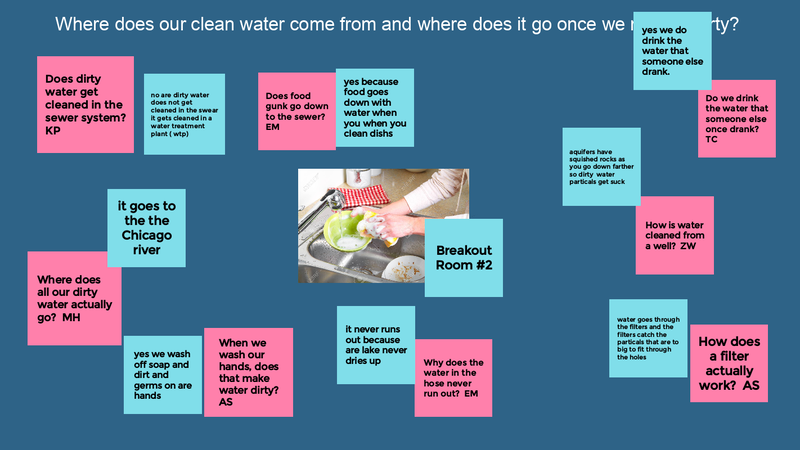









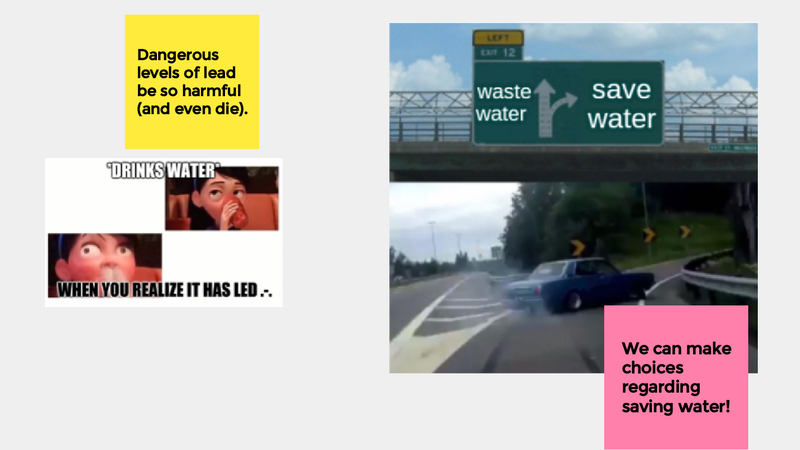


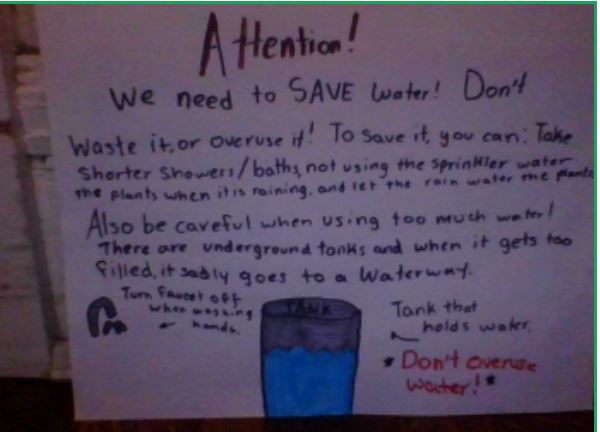
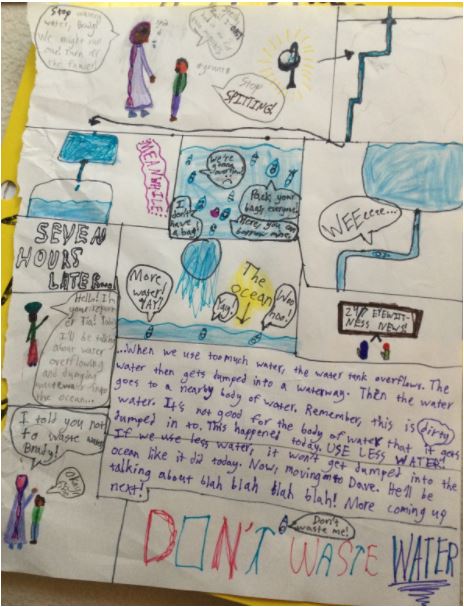
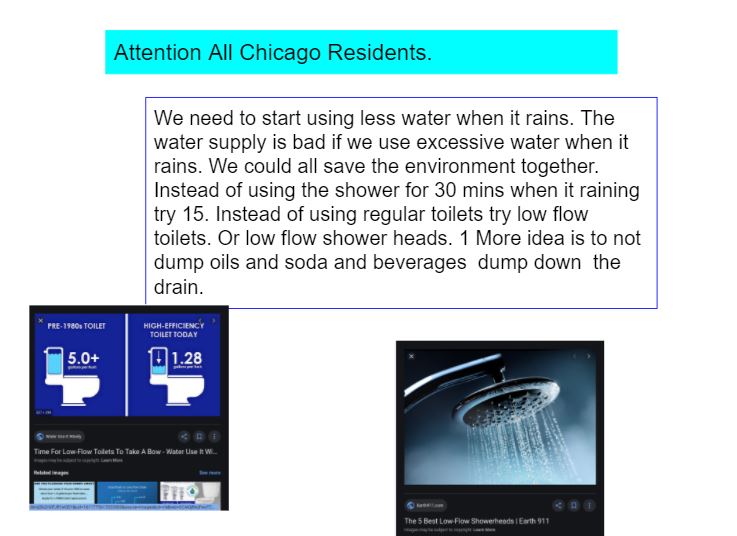


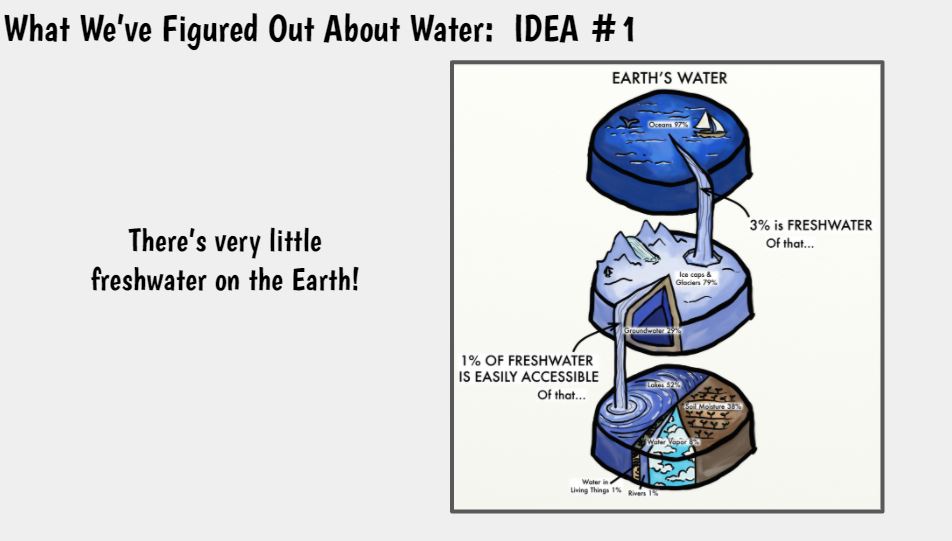












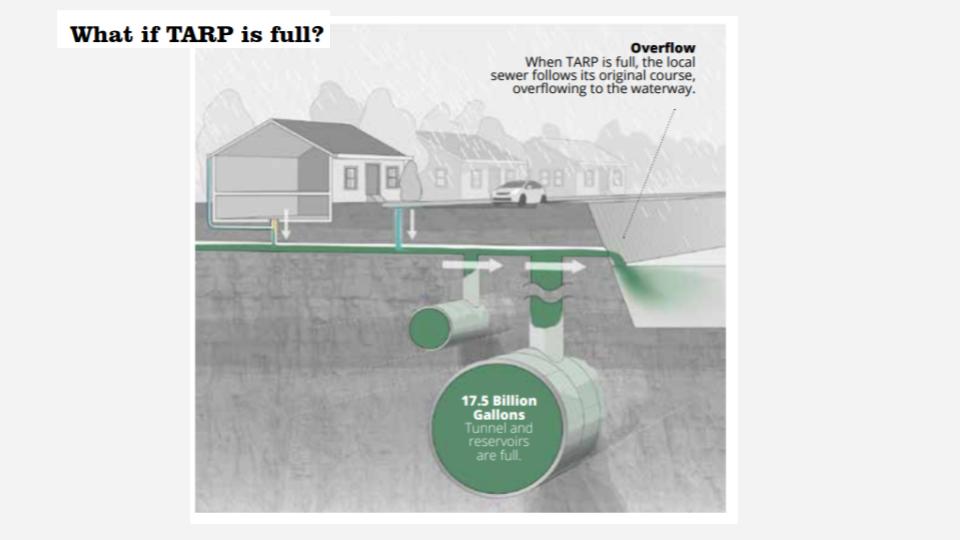


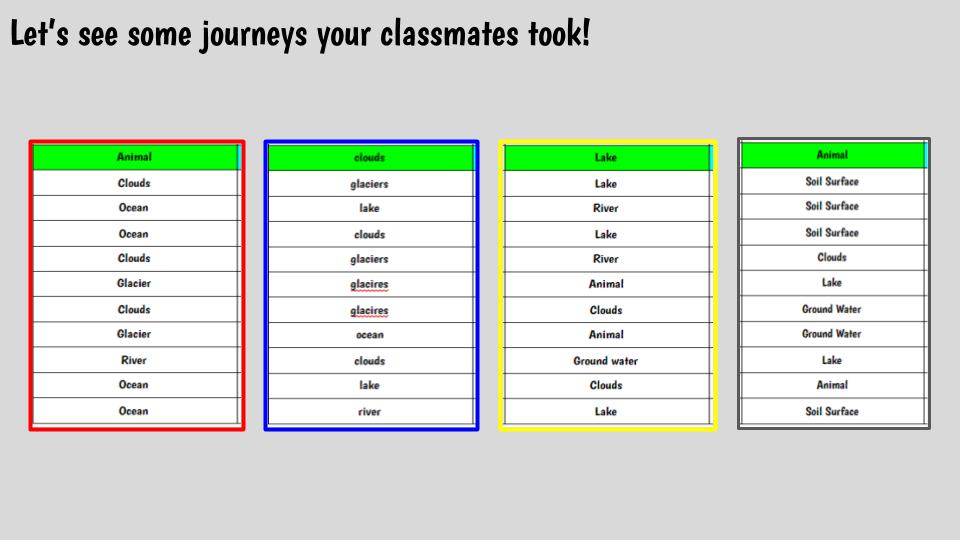

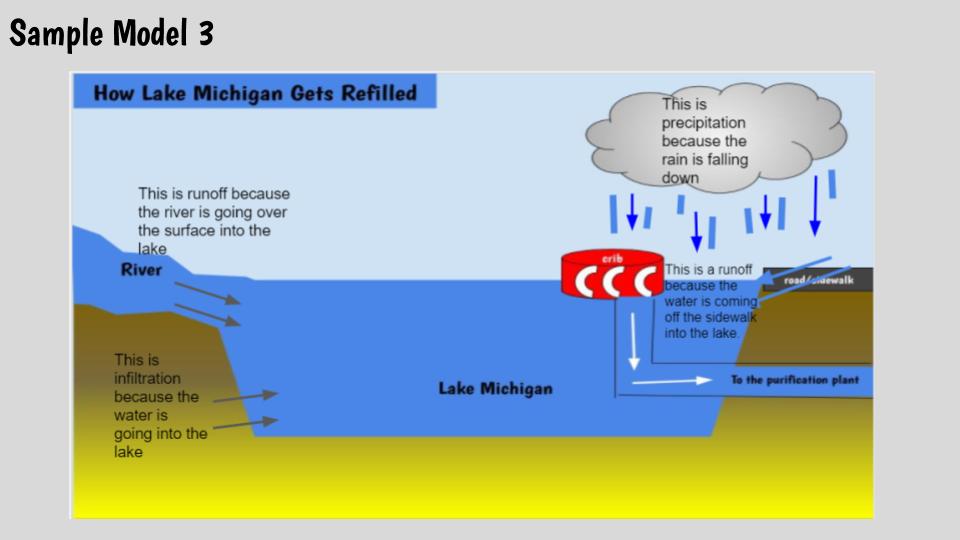










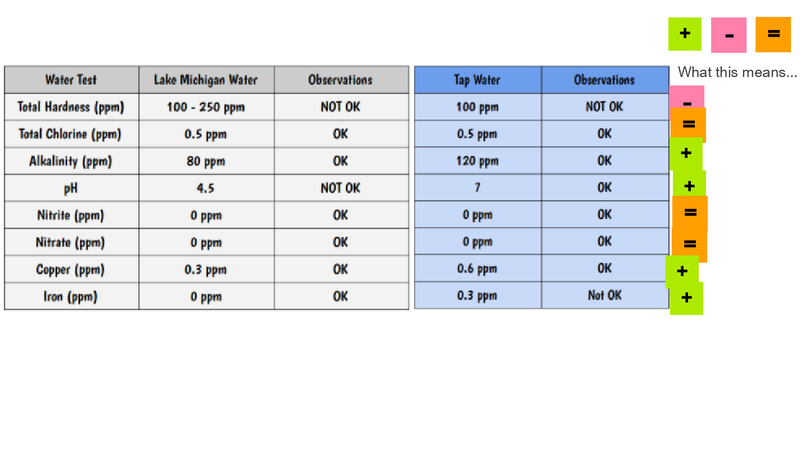
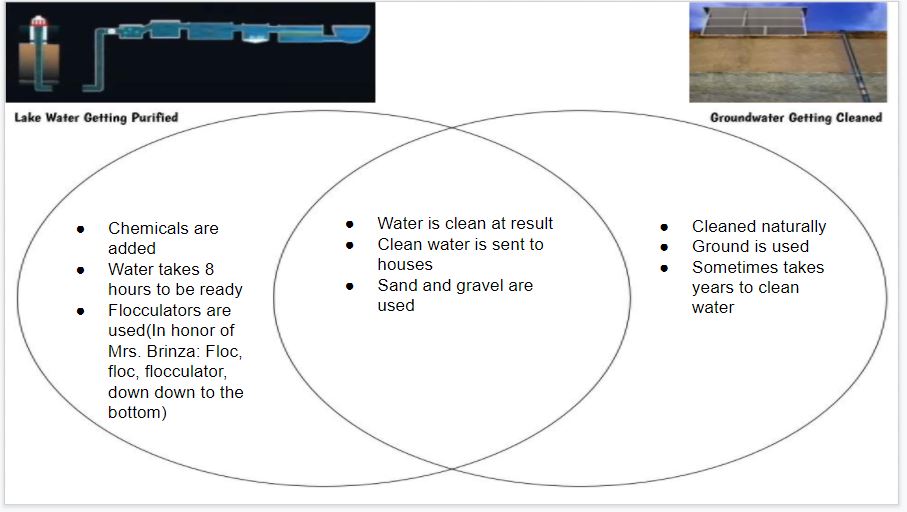





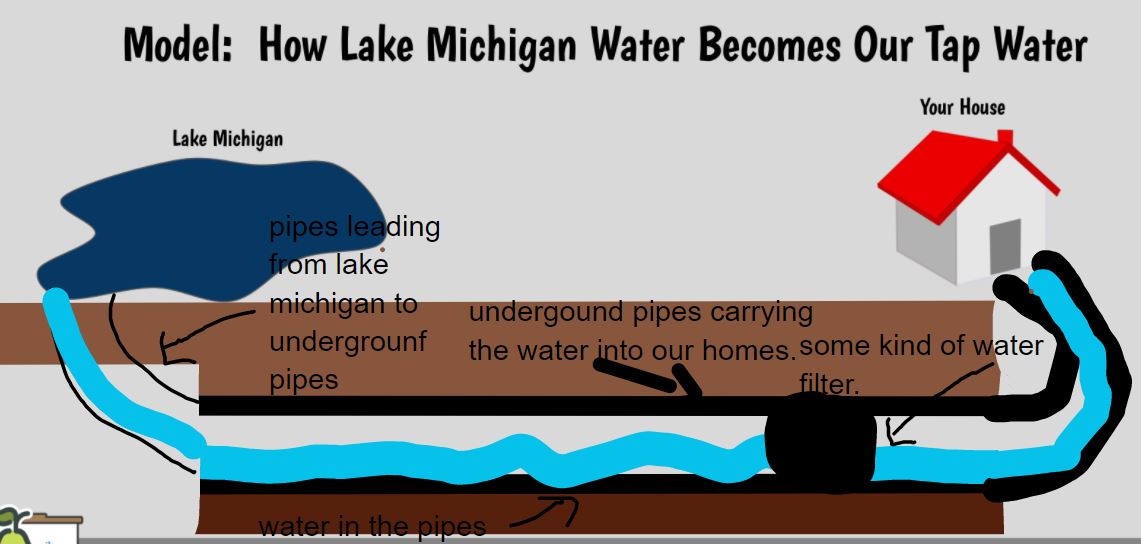




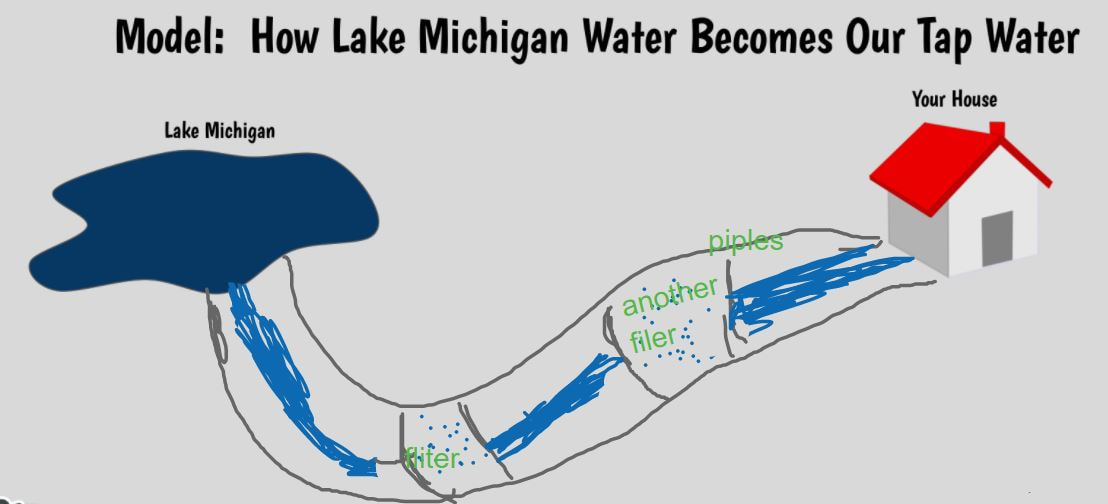
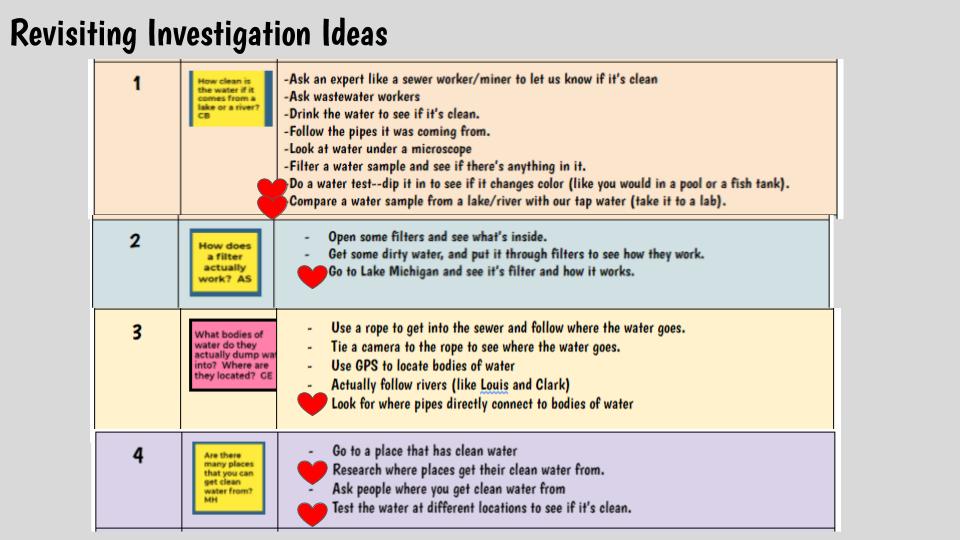




 RSS Feed
RSS Feed